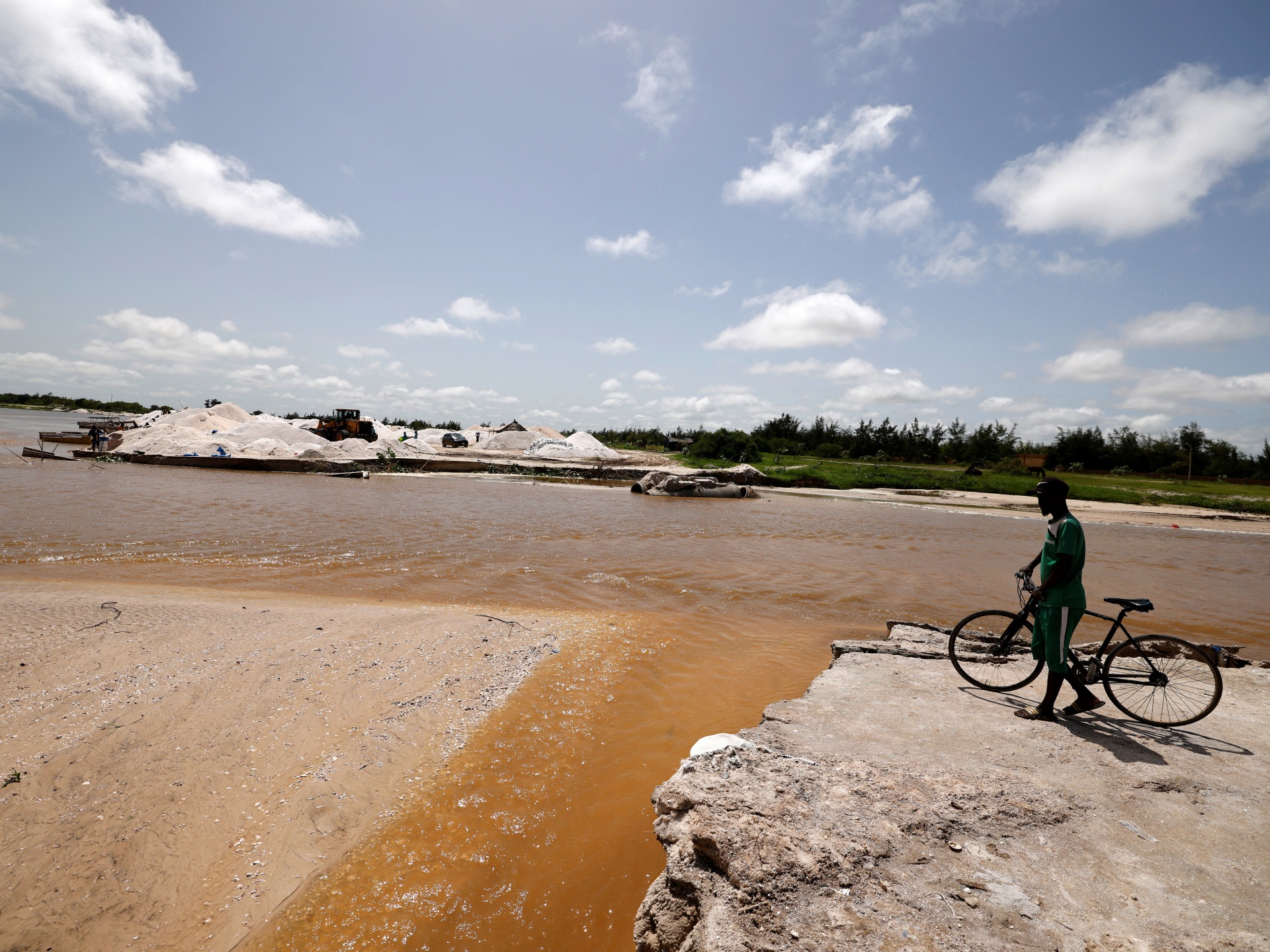Senegal, like other countries in the West and Central Africa region, has recorded above-normal rainfall in recent weeks that has unleashed destructive floods
After days of torrential rain, salt miner Moussa Diare could only watch in despair as flood waters breached a meters-wide gap on the banks of Senegal’s Pink Lake and washed away thousands of dollars worth of salt mounds he had gathered.
“This is the first time I’ve seen this. I lost a lot of money with my salt that has been washed and dissolved by the water,” Diare said on Tuesday.
Senegal, like other countries in the West and Central Africa region, has recorded above-normal rainfall in recent weeks that has unleashed destructive floods after poor drainage systems failed.
The lake, separated by a strip of dunes from the Atlantic Ocean, is situated approximately 35 kilometres (20 miles) from Senegal’s capital Dakar. It is one of the country’s most-visited sites and is under consideration as a UNESCO World Heritage site.
Officially known as Lake Retba, it derives its pinkish hue from an alga that produces the coloured pigment, and like the Dead Sea, is also known for its high salt content.
Diare is one of more than 3,000 people who earn a living from the lake, including hundreds of divers who manually rake salt from the bottom of the lake, producing about 38,000 tonnes annually. The salt is used for cooking and exported around the region.
As persistent rains drenched Senegal, with approximately 126 millimetres (five inches) recorded during one spell over the past weekend, according to the Water and Sanitation Ministry, drainage systems and retention reservoirs were quickly overwhelmed and channelled flood waters towards the lake.
According to Senegal’s civil aviation and meteorological agency, rainfall above 50mm (1.9 inches) in the country is considered “extreme”.
As the flows reached the lake, the water level rose, washing away dozens of salt mounds, said Babacar Ba, another miner who was trying to save his remaining mounds.
Abdoulaye Faty, a hydrologist and lecturer at Dakar’s Cheikh Anta Diop University, told the Reuters news agency that rising water levels in surrounding plateaux naturally pooled into the low-lying lake.
Because the lake has received abundant flood water, it could have an effect on its salt content and colour, he added.
With a month to go before the end of Senegal’s June – October rainy season, other businesses around the lake, including restaurants and flat-bottom boat operators, who take tourists on tours of the lake, are counting their losses and worried about the future.
“What appealed to visitors was the feeling of floating on the surface of the lake because of its salt content. Currently, no one can float here,” said Abdou Seye Dieng who runs a campsite on the shores.
The government has activated a national plan to help communities hit by perennial floods, and a mission from the Water and Sanitation Ministry is expected to visit the lake soon.
